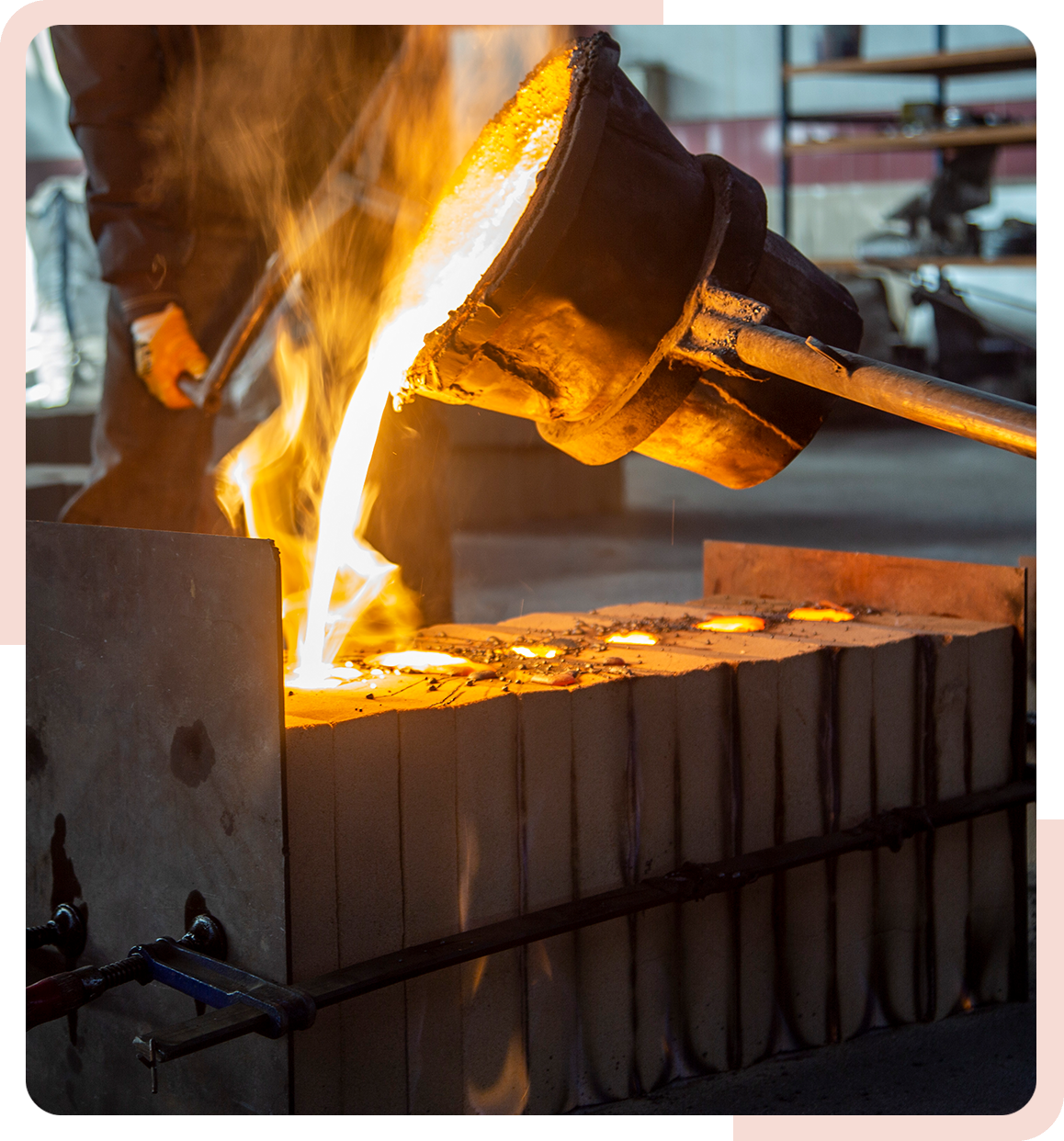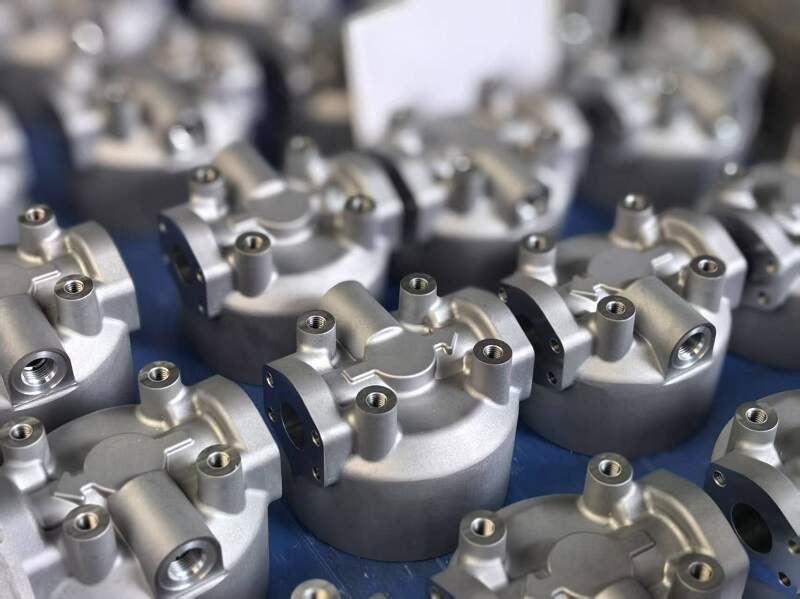Understanding Aluminum Casting: A Comprehensive Overview to Its Benefits and Applications
Aluminum casting is a procedure that changes liquified aluminum right into solid types with different methods. This approach offers significant benefits, such as light-weight strength and corrosion resistance. It discovers applications in many sectors, mirroring its versatility. Recognizing the intricacies of aluminum casting and its best techniques can considerably influence the top quality of the last product. Exploring these elements discloses real possibility of aluminum casting in modern-day production.
The Essentials of Aluminum Casting
Aluminum casting is a production procedure that transforms liquified aluminum right into solid objects with numerous techniques. This procedure begins with heating aluminum up until it reaches its melting point, enabling it to move right into molds. There are a number of techniques of aluminum casting, consisting of sand casting, die casting, and financial investment casting, each suitable for various applications based upon layout intricacy and manufacturing volume.
In sand casting, molds are developed utilizing sand, providing versatility for intricate shapes. Die casting involves requiring liquified aluminum right into a steel mold and mildew under high stress, resulting in repeatable and accurate parts. Investment casting, on the other hand, utilizes a wax pattern that is coated with ceramic to develop comprehensive elements.
After the aluminum solidifies and cools down, the molds are eliminated, revealing the finished items. This casting process is integral in numerous industries, including automotive, aerospace, and durable goods, making it possible for the production of resilient and light-weight elements.
Benefits of Aluminum Casting
One of the essential advantages of aluminum casting hinges on its capacity to create light-weight yet strong elements. This one-of-a-kind combination makes aluminum an optimal choice for numerous sectors, including vehicle, aerospace, and durable goods. The intrinsic rust resistance of aluminum also boosts the sturdiness of the cast elements, extending their life expectancy and decreasing the requirement for maintenance.
Additionally, aluminum casting enables intricate geometries and intricate designs, which can lead to more reliable and visually pleasing items. The product's exceptional thermal and electric conductivity better broadens its applications, particularly in electronic devices and heat exchangers.
Additionally, aluminum recycling is very efficient, adding to ecological sustainability and minimizing manufacturing costs. Generally, the advantages of aluminum casting position it as a functional and useful solution for suppliers looking for to optimize performance while reducing weight and resource usage.
Common Techniques of Aluminum Casting
While numerous strategies exist for aluminum casting, each technique uses unique advantages customized to details applications. The most common approaches consist of sand casting, die casting, and investment casting.
Sand casting, understood for its convenience, makes use of sand molds to produce complex forms and is appropriate for both big and tiny manufacturing runs. Die casting, on the various other hand, uses high-pressure shot of molten aluminum into steel molds, resulting in accurate dimensions and smooth surface areas, making it suitable for mass production.
Financial investment casting, often described as lost-wax casting, involves creating a wax pattern covered with a ceramic covering. Precision aluminum casting. Once the wax is disappeared, liquified aluminum is put right into the tooth cavity, yielding elaborate layouts and excellent surface area finishes
Each of these techniques plays an important duty in the aluminum casting landscape, using particular advantages that deal with differing manufacturing needs and manufacturing ranges.
Applications Across Industries
The versatility of aluminum casting techniques permits a large range of applications across different sectors. In the automobile field, lightweight aluminum components boost gas effectiveness and efficiency, adding to the expanding need for electrical cars. Aerospace markets use aluminum castings for their strength-to-weight ratio, guaranteeing safety and sturdiness in airplane production.
The construction industry gain from aluminum casting with building elements and architectural parts that withstand rust and require very little upkeep. In addition, consumer electronics manufacturers employ aluminum castings for frameworks and real estates, balancing appearances with performance.
In the aquatic industry, aluminum spreadings are favored for i was reading this boats and aquatic devices due to their resistance to saltwater corrosion. The clinical area makes use of aluminum castings in surgical tools and equipment, making certain accuracy and go to the website reliability. Overall, aluminum casting's adaptability enables it to satisfy the varied needs of several sectors, making it a crucial manufacturing process.
Finest Practices for Successful Aluminum Casting
Successful aluminum casting relies on a mix of mindful preparation, exact execution, and comprehensive high quality control. At first, picking high-grade aluminum alloys is crucial, as they directly influence the casting's homes and performance. Correct mold design is necessary, assuring that it fits thermal contraction and decreases defects.
During the melting process, maintaining the appropriate temperature and staying clear of contamination are crucial to achieving an uniform alloy. In addition, using reliable putting techniques can enhance the filling of molds, decreasing the possibility of air pockets or incorporations.
Post-casting, executing detailed examination approaches, such as visual analyses and non-destructive screening, ensures that issues are determined early. Employing strenuous top quality control measures throughout the procedure aids maintain uniformity and integrity in the final items. By adhering to these best techniques, suppliers can significantly boost the success and performance of their aluminum casting procedures.
Regularly Asked Inquiries
What Security Actions Should Be Taken During Aluminum Casting?

Just How Can Issues in Aluminum Castings Be Minimized?
Flaws in aluminum castings can be minimized with careful mold and mildew design, appropriate temperature control, ensuring clean steel, utilizing ideal pouring strategies, and carrying out complete evaluations to recognize and address issues prior to finalizing the casting find out process.

What Is the Environmental Influence of Aluminum Casting?
The ecological impact of aluminum casting consists of energy-intensive procedures, greenhouse gas exhausts, and source extraction concerns. Nonetheless, innovations in reusing and sustainable techniques can minimize these results, advertising an extra environment-friendly approach to aluminum manufacturing.
Can Aluminum Casting Be Reused?
Yes, aluminum casting can be reused successfully. The reusing process needs considerably much less power compared to main aluminum production, making it an eco-friendly alternative that contributes to source conservation and reduced carbon discharges.
What Are the Prices Linked With Aluminum Casting Processes?
Expenses related to aluminum casting procedures include product expenditures, labor, tools maintenance, energy usage, and mold and mildew manufacture. These aspects can vary significantly based upon production range, intricacy of styles, and particular production methods used.
Aluminum casting is a process that transforms liquified aluminum into solid types through numerous techniques. Aluminum casting is a manufacturing procedure that changes molten aluminum into solid things with various strategies. While numerous techniques exist for aluminum casting, each method supplies unique advantages customized to specific applications. The environmental influence of aluminum casting consists of energy-intensive processes, greenhouse gas emissions, and source extraction concerns. Prices connected with aluminum casting procedures include product expenses, labor, tools upkeep, power usage, and mold and mildew manufacture.